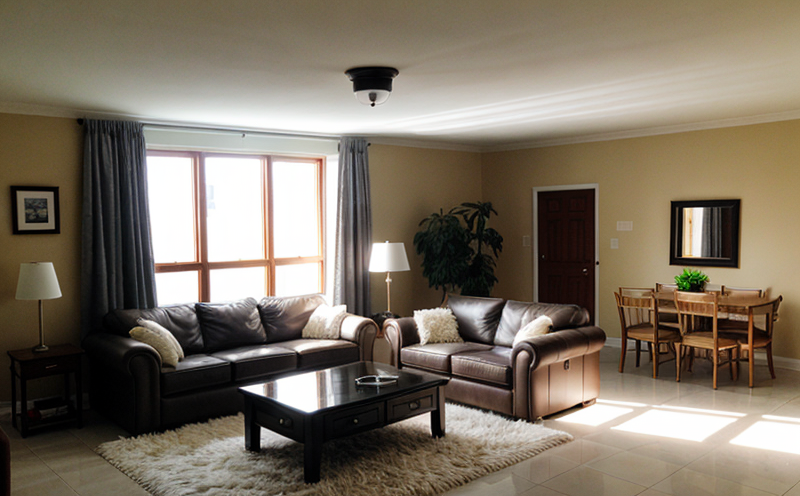ANSI IES LM 82 Indoor Lighting Testing of LED Packages
The ANSI/IES LM-82 standard is a critical guideline for testing the lumen maintenance and luminous flux of light-emitting diode (LED) packages used in indoor lighting applications. This service ensures that LEDs meet performance expectations over their lifetime, which is essential for maintaining consistent lighting quality and energy efficiency.
Understanding why ANSI IES LM-82 matters involves recognizing the importance of accurate lumen maintenance measurements. These tests help manufacturers ensure that their products will perform as advertised throughout their operational life. For quality managers, compliance officers, R&D engineers, and procurement teams, this service is vital for meeting regulatory requirements and ensuring product integrity.
The testing process typically involves exposing the LED packages to specific environmental conditions designed to simulate real-world usage scenarios. This includes temperature cycling, humidity exposure, and aging under steady-state current. The goal is to measure how much light output decreases over time—a metric known as lumen maintenance (LM). By adhering to ANSI IES LM-82 standards, manufacturers can provide accurate product labeling and warranties.
During testing, the LED packages are placed in a controlled environment where they undergo rigorous evaluation. The test setup includes specialized equipment capable of simulating various operating conditions that LEDs might encounter during their lifecycle. This allows for precise measurement of light output before and after aging, ensuring compliance with industry standards.
The ANSI IES LM-82 standard emphasizes the importance of accurate data collection throughout the testing process. Reporting must be detailed enough to demonstrate adherence to all specified parameters while also providing insights into potential areas for improvement in future product designs. This information is invaluable for R&D teams working on next-generation lighting solutions.
Real-world applications of ANSI IES LM-82 include ensuring reliable performance in commercial buildings, residential spaces, and industrial facilities where consistent lighting quality is crucial. By adhering to these standards, manufacturers can build trust with consumers by delivering products that consistently meet or exceed expectations regarding light output stability.
- Temperature cycling simulates the stress placed on LEDs due to fluctuations in ambient temperature.
- Humidity exposure helps assess the impact of moisture on LED performance over time.
- Aging under steady-state current measures long-term light output retention without external stresses like heat or vibration.
Why It Matters
The ANSI IES LM-82 standard is essential for manufacturers and quality assurance teams because it provides a consistent method for evaluating the lumen maintenance of LED packages. Consistent lumen output ensures that indoor lighting remains effective, contributing to energy efficiency and overall building performance.
For compliance officers, meeting these standards demonstrates commitment to regulatory requirements and consumer protection. It also supports the development of accurate product labeling and warranties, which are crucial for maintaining customer satisfaction and trust.
R&D engineers benefit from this service by gaining insights into how different factors affect LED performance over time. This knowledge can inform design improvements aimed at enhancing longevity and reliability. For procurement professionals, ensuring suppliers meet ANSI IES LM-82 standards helps guarantee the quality of components across supply chains.
In summary, ANSI IES LM-82 testing is vital for maintaining high-quality indoor lighting products that perform reliably over extended periods. This ensures both environmental sustainability and user satisfaction.
Applied Standards
The ANSI/IES LM-82 standard is widely recognized as the authoritative source for testing LED packages in terms of lumen maintenance and luminous flux. Developed by the Illuminating Engineering Society (IES), this standard provides a clear framework for evaluating how much light output decreases over time.
Compliance with ANSI IES LM-82 ensures that manufacturers can accurately predict the performance of their products under various operating conditions, leading to more reliable and efficient lighting solutions. The standard covers not only laboratory testing but also field data collection methods, providing a comprehensive approach to assessing LED longevity.
In addition to ANSI/IES LM-82, other relevant standards include those from international bodies such as ISO (International Organization for Standardization) and IEC (International Electrotechnical Commission). These organizations contribute additional guidance on aspects like photometric testing and electrical performance, complementing the focus of ANSI IES LM-82 specifically on lumen maintenance.
By adhering to these standards, manufacturers can ensure their products meet stringent quality benchmarks. This not only enhances brand reputation but also fosters customer confidence in choosing reliable lighting solutions.





